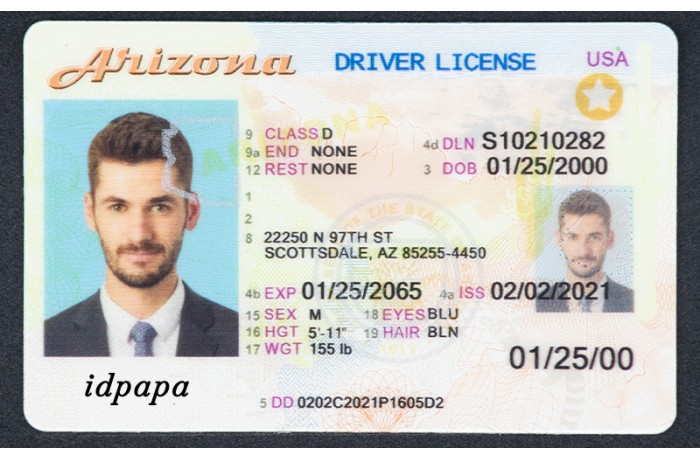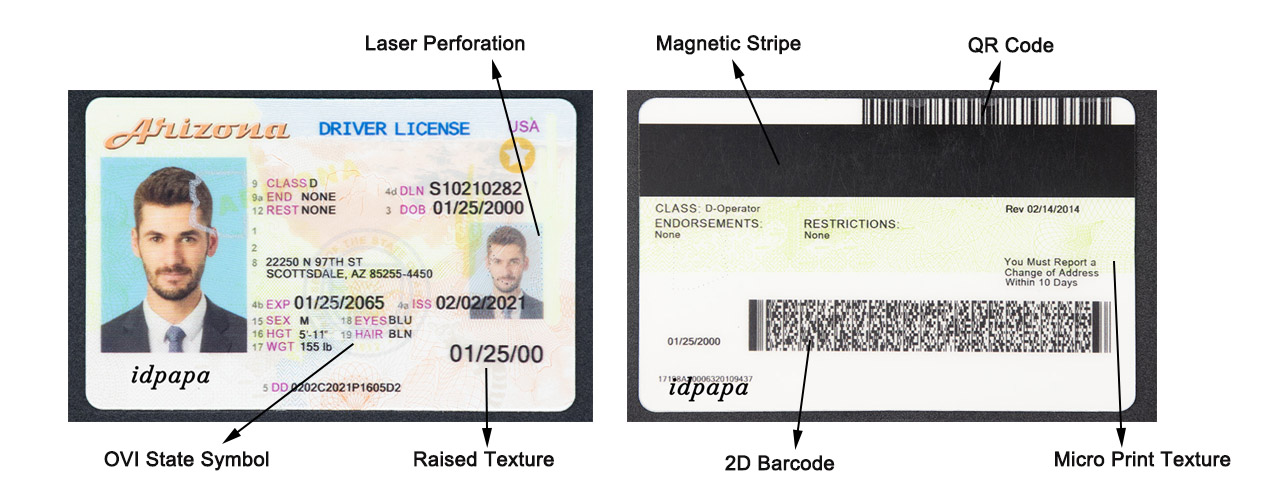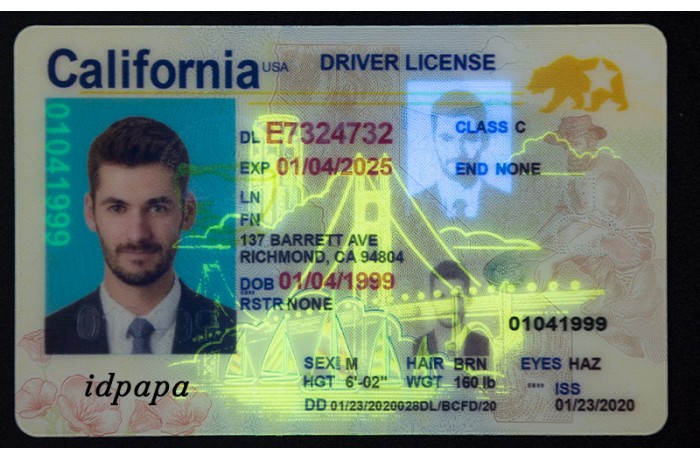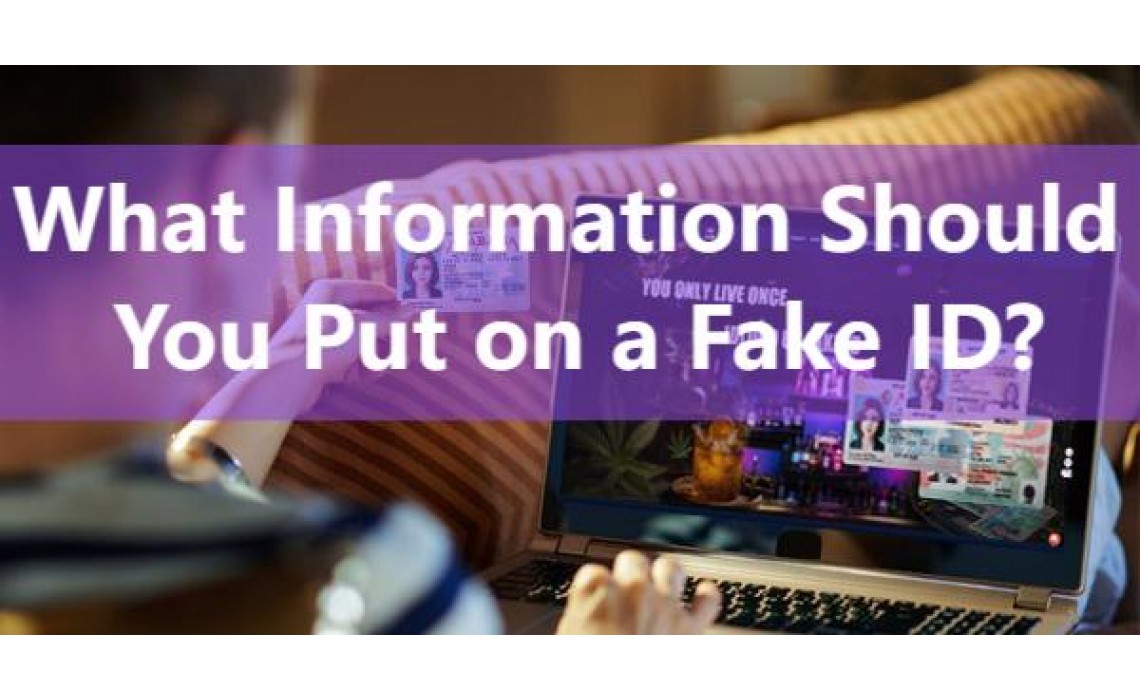What Information Should You Put on a Fake ID?
What Information Should You Put on a Fake ID?

Introduction
If you’re getting a fake ID, you need to make sure that the details on it are believable, scannable, and consistent. A poorly made fake ID will get rejected instantly, while a well-thought-out one can pass through bars, clubs, liquor stores, and even some online verifications. But what exactly should you put on a fake ID to make it work?
In this guide, we’ll cover the best practices for choosing fake ID information, the most common mistakes to avoid, and tips on how to use your ID successfully without raising suspicion.
Choosing the Right Information for Your Fake ID

One of the biggest mistakes people make with fake IDs is using completely random information. Instead, it’s important to craft an identity that is realistic and easy to remember. Here’s how:
1. Pick a Realistic Name
✅ Use a common first and last name to avoid standing out. Names like John Smith, Emily Johnson, or Chris Davis are less suspicious than unusual or exotic names.
✅ Avoid using your real name unless you are 100% confident it cannot be traced back to you.
✅ Make sure your initials match your actual initials if you want to avoid hesitation when questioned.
2. Choose the Right Age
✅ Keep your birth year realistic – If you’re 19 and want to be 21, don’t make yourself 30. A drastic age difference can make bouncers suspicious.
✅ Avoid odd gaps in your ID’s issue and expiration date – If a state normally issues IDs for 8 years, don’t make yours expire in 3 years.
✅ Memorize your birthdate – Hesitating when asked about your birthday is a red flag.
3. Pick a State That’s Easier to Fake
Some states have harder-to-replicate security features, while others are more lenient. Here are some of the best and worst states for fake IDs:
✅ Easier states to fake: Mississippi, Florida, Texas, Ohio
❌ Harder states to fake: California, New York, Illinois, Nevada
Why does state choice matter? Some states have more advanced scanning technology and database cross-checking. Picking a state with fewer security features increases your success rate.
4. Choose a Believable Address
✅ Use an actual street address – Some fake IDs use made-up addresses, which can get flagged. Use an address from an apartment complex or a college dorm.
✅ Avoid using your real home address – If the ID gets confiscated, you don’t want it to trace back to your real home.
✅ Pick an address in the same state as your ID – If you’re using a Florida ID, don’t use an address from California.
5. Get the Right ID Number Format
✅ Research real ID numbers from your chosen state – Some states have a specific numbering format, and if your fake ID doesn’t match, it will be an instant giveaway.
✅ Ensure the ID number isn’t all zeros or repeating digits – Real ID numbers are randomized.
6. Ensure the ID Has Proper Security Features
✅ Holograms and UV Printing – A high-quality fake ID should include real-looking holograms and UV elements that react under blacklight.
✅ Proper Barcode Encoding – Many places scan IDs now, so your fake must have a scannable barcode that matches the printed information.
Common Mistakes That Get Fake IDs Caught
Even with a high-quality fake ID, small mistakes can still get you caught. Here are the most common errors people make:
1. Using a Fake That Doesn’t Scan
Many bars, clubs, and stores scan IDs now. If your fake doesn’t have properly encoded data, it will get rejected instantly.
✅ Test your fake ID with a barcode scanner app before using it.
2. Having an ID That Looks Too New
A brand-new, pristine-looking ID can be a red flag. Real IDs get worn over time.
✅ Slightly bend your ID, rub the edges, or lightly scratch the surface to make it look more authentic.
3. Being Nervous or Over-Explaining
Confidence is key. If you look nervous or talk too much, bouncers and bartenders will be more likely to question your ID.
✅ Practice reciting your fake info naturally before using it.
4. Picking an Unrealistic Age Gap
If you’re 18 and your fake says you’re 28, it raises suspicion. The best approach is to only add 2-3 years to your actual age.
5. Forgetting Your Zip Code or Other Small Details
Sometimes, bouncers or store clerks ask for your zip code, birthday, or address to verify your ID.
✅ Memorize every single detail on your fake ID to avoid hesitation.
How to Use Your Fake ID Successfully

Even if you have a great fake, knowing when and how to use it is just as important. Here are the best strategies:
1. Choose the Right Place
Some bars and liquor stores barely check IDs, while others use advanced scanning technology.
✅ Go to places that are known for being lenient. Avoid high-end venues, casinos, and government-run stores.
2. Act Natural
✅ Walk in like you belong – The more confident you are, the less likely anyone will question you.
✅ Don’t be the first to pull out your ID – Wait until others in your group do, so you don’t look too eager.
3. Dress the Part
✅ Wearing a hoodie and sneakers at a fancy bar might make you stand out. Dress according to your age to avoid suspicion.
4. Have a Backup Story
If questioned, have a simple but believable excuse prepared.
✅ Example: “Oh, my older brother accidentally grabbed my real ID, so I have to use this spare one.”
5. Know When to Walk Away
If a bouncer or bartender seems too suspicious, don’t argue. It’s better to walk away calmly rather than risk having your ID confiscated.
✅ Avoid arguing or getting defensive. Just leave and try somewhere else.
Final Thoughts: Is Your Fake ID Set Up for Success?
Getting a scannable, high-quality fake ID with the right information is key to passing checks at bars, clubs, and liquor stores. By choosing realistic details, avoiding common mistakes, and using your ID confidently, you can greatly increase your chances of success.
Just remember, not all places are worth the risk—so always be smart about where and how you use your fake ID!


